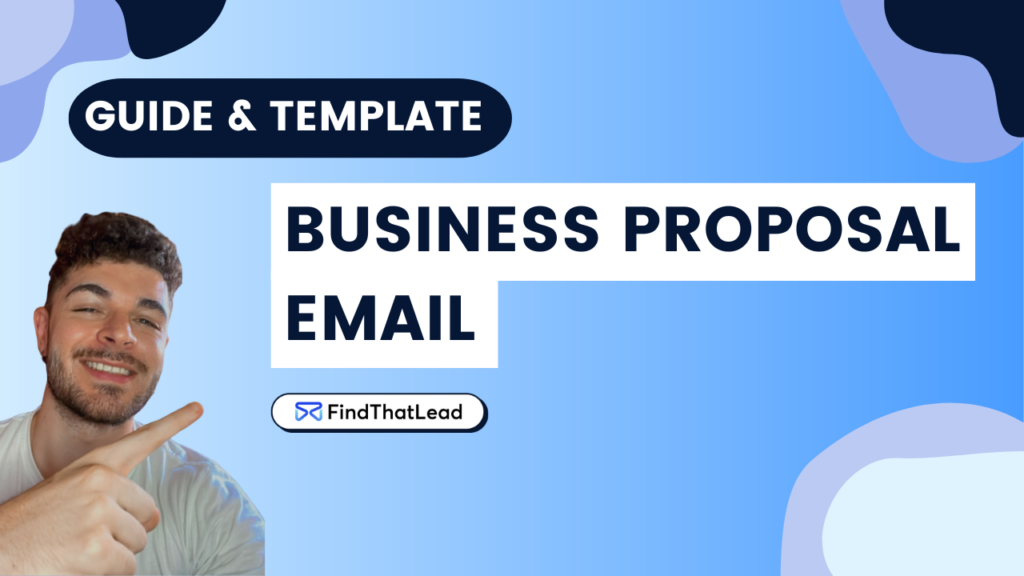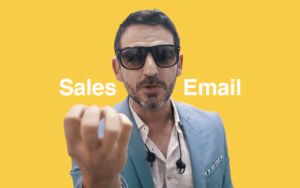Do you know what is the most critical and usual mistake in a commercial email proposal? That this is the first email you send.
Yes, within the sales process, the sales proposal email is not the first communication that the recipient should receive, it is PART of the sales process, but not the beginning.
And like this, there are many more mistakes that limit the effectiveness of these emails.
But that’s why this post has been created, I will show you step by step how to write and when to send these emails.
Shall we start?
Definition and Importance of a Business Proposal Email
A business proposal email is an email designed to present a product or service offer to a hot lead.
Yes, hot lead, a potential customer who is already informed and interested in your product/service.
You can say said that a commercial proposal email is the bridge that drives the lead’s interest in a final sale.
Solicited vs. Unsolicited Proposals
Proper preparation before writing your business proposal email is key to ensuring that your message is relevant and compelling. Knowing your target audience and conducting proper research are HIGHLY important steps.
Preparation and initial cold email
The first step in preparing your business proposal is to send an initial cold email first. An email that aims to generate interest and establish a relationship with the potential customer.
It should not contain a direct proposal, but rather show how you can help solve the pain points. The key is not to sell in this message, again, the objective should be to create a business relationship.
➡️ You can check out our cold email templates.
When you are preparing this email you have to spend a few minutes to thoroughly investigate your prospect: know their interests, problems and how your product or service solves them: This email should be brief, personalized, direct and focused on capturing the reader’s attention, the CTA should be to invite to another conversation either on the phone, in person or a meet.
Meeting and preparation for proposal
The next step is to arrange a meeting or call after the prospect has shown interest in your email and has become a lead. Here you will have the opportunity to dig a little deeper into their needs and how you can help them during this conversation.
It is essential to prepare well for this meeting, carry all relevant information about the customer, solutions and a sales pitch.
Within the meeting you have to focus on listening to the customer, understand their problems and present an overview of how your product or service can be beneficial. But be careful, try to get him to talk more than you do.
Once the meeting is over, you are ready to prepare your email sales proposal. Let’s see the 5 steps on how to create it?
The 5 Steps to Writing an Effective Business Proposal Email
Now that you’ve established a relationship with the client and had a productive meeting, it’s time to write the business proposal. Here are the key steps to do it effectively.
Step 1: Greeting and context
Start the email with a greeting, mention the prospect’s name and talk about the meeting or call you had with them. For example:
“Hello [Name],
I hope you are well. I want to thank you for the meeting we had on [day]. It was quite a pleasure to meet you and see how we can collaborate.”
Step 2: State the value of your proposal
Now it’s time to briefly summarize the key points discussed during the meeting and how your product or service can solve the lead’s pain points. Focus on their problem, not your product.
“During our conversation, you mentioned that [specific problem] is one of the areas in which you are looking to improve. And we could see that [your product/service] can help [company] overcome this challenge by offering [specific benefits].”
Step 3: Define objectives and goals
It is very important to clearly establish the MEASURABLE objectives that you want to achieve with your proposal: efficiency improvements, cost reduction, revenue increase, etc. Be graphic and specific at this point, you can even use bullet points.
“Our goal with this proposal is [specific objective], which will translate into [measurable benefits].”
Step 4: Outline budget and schedule
Now you need to provide a clear outline of the budget needed to implement your proposal well and a projected estimate/schedule.
“Attached you will find a detailed breakdown of the budget required to carry out this proposal, also a schedule outlining the project phases and estimated timelines. “
Step 5: The call to action
You can end your email with a clear and direct CTA. For example sign the agreement or any other specific action you want them to take.
“I’d be happy to discuss this proposal in more detail and answer any questions you may have. Can we schedule a call next week to go over everything? How about Monday at 10:00?”
Business proposal email template
I have created a template with what we have seen:
Subject: Proposal for [Name of the Project/Service] – [Name of your Company].
Hey [Name],
I hope you are well. I want to thank you for the meeting we had on [day]. It was a pleasure to meet you and see how we can collaborate.
During our conversation, you mentioned that [specific problem] is one of the areas in which you are looking to improve. And we could see that [your product/service] can help [company] overcome this challenge by offering [specific benefits].
Our goal with this proposal is [specific objective], which will translate into [measurable benefits].
Attached you will find a detailed breakdown of the budget required to carry out this proposal, also a timeline outlining the project phases and estimated timelines.
I’d be happy to discuss this proposal in more detail and answer any questions you may have. Can we schedule a call next week to go over everything? How about Monday at 10:00.
Greetings,
[Your Name]
What to do after sending a commercial proposal by email?
In this article we have focused on an intermediate step and one of the most important, but that does not mean that we have to neglect something as key as follow-up.
My recommendation is to have a CRM with which you can “track” and follow up all the leads you have.
If you do not have a large volume of hot leads, the ideal is an affordable CRM focused on small and medium businesses like Clientify, a CRM that allows you to do everything from the platform itself, from managing the first interest of the prospect to closing the sale, through the writing and automation of the follow-up.
Conclusion on writing a business proposal by mail
Writing a business proposal email requires thoughtful planning and understanding of your lead. It should be a well-structured and personalized email that aims to be the bridge that converts interest into a sale.
⚠️ Remember, this type of email should not be a first contact, but rather a continuation of an established relationship.
The key steps should have a personalized greeting, a clear statement of the value you offer, the definition of objectives and goals, a breakdown of the budget and timeline, and a direct call to action.
In short, a good business proposal email should be clear, direct and focused on the customer’s needs.





